A beta-herpesvirus with fluorescent capsids to study transport in living cells
- PMID: 22792376
- PMCID: PMC3394720
- DOI: 10.1371/journal.pone.0040585
A beta-herpesvirus with fluorescent capsids to study transport in living cells
Abstract
Fluorescent tagging of viral particles by genetic means enables the study of virus dynamics in living cells. However, the study of beta-herpesvirus entry and morphogenesis by this method is currently limited. This is due to the lack of replication competent, capsid-tagged fluorescent viruses. Here, we report on viable recombinant MCMVs carrying ectopic insertions of the small capsid protein (SCP) fused to fluorescent proteins (FPs). The FPs were inserted into an internal position which allowed the production of viable, fluorescently labeled cytomegaloviruses, which replicated with wild type kinetics in cell culture. Fluorescent particles were readily detectable by several methods. Moreover, in a spread assay, labeled capsids accumulated around the nucleus of the newly infected cells without any detectable viral gene expression suggesting normal entry and particle trafficking. These recombinants were used to record particle dynamics by live-cell microscopy during MCMV egress with high spatial as well as temporal resolution. From the resulting tracks we obtained not only mean track velocities but also their mean square displacements and diffusion coefficients. With this key information, we were able to describe particle behavior at high detail and discriminate between particle tracks exhibiting directed movement and tracks in which particles exhibited free or anomalous diffusion.
Conflict of interest statement
Figures
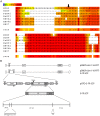
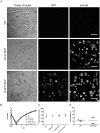
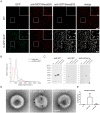
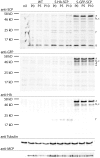



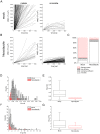
Similar articles
-
Improper tagging of the non-essential small capsid protein VP26 impairs nuclear capsid egress of herpes simplex virus.PLoS One. 2012;7(8):e44177. doi: 10.1371/journal.pone.0044177. Epub 2012 Aug 31. PLoS One. 2012. PMID: 22952920 Free PMC article.
-
Functional Carboxy-Terminal Fluorescent Protein Fusion to Pseudorabies Virus Small Capsid Protein VP26.J Virol. 2017 Dec 14;92(1):e01193-17. doi: 10.1128/JVI.01193-17. Print 2018 Jan 1. J Virol. 2017. PMID: 29046447 Free PMC article.
-
Simultaneous Visualization of Parental and Progeny Viruses by a Capsid-Specific HaloTag Labeling Strategy.ACS Nano. 2016 Jan 26;10(1):1147-55. doi: 10.1021/acsnano.5b06438. Epub 2016 Jan 6. ACS Nano. 2016. PMID: 26720596
-
Fusion of a fluorescent protein to the pUL25 minor capsid protein of pseudorabies virus allows live-cell capsid imaging with negligible impact on infection.J Gen Virol. 2012 Jan;93(Pt 1):124-129. doi: 10.1099/vir.0.036145-0. Epub 2011 Oct 5. J Gen Virol. 2012. PMID: 21976610 Free PMC article.
-
Nuclear Egress of Herpesviruses: The Prototypic Vesicular Nucleocytoplasmic Transport.Adv Virus Res. 2016;94:81-140. doi: 10.1016/bs.aivir.2015.10.002. Epub 2016 Jan 29. Adv Virus Res. 2016. PMID: 26997591 Review.
Cited by
-
Improper tagging of the non-essential small capsid protein VP26 impairs nuclear capsid egress of herpes simplex virus.PLoS One. 2012;7(8):e44177. doi: 10.1371/journal.pone.0044177. Epub 2012 Aug 31. PLoS One. 2012. PMID: 22952920 Free PMC article.
-
A hydrophobic domain within the small capsid protein of Kaposi's sarcoma-associated herpesvirus is required for assembly.J Gen Virol. 2014 Aug;95(Pt 8):1755-1769. doi: 10.1099/vir.0.064303-0. Epub 2014 May 13. J Gen Virol. 2014. PMID: 24824860 Free PMC article.
-
Cytomegaloviruses reorganize endomembrane system to intersect endosomal and amphisome-like egress pathway.Front Cell Dev Biol. 2023 Dec 19;11:1328751. doi: 10.3389/fcell.2023.1328751. eCollection 2023. Front Cell Dev Biol. 2023. PMID: 38178873 Free PMC article. No abstract available.
-
Membraneless Compartmentalization of Nuclear Assembly Sites during Murine Cytomegalovirus Infection.Viruses. 2023 Mar 16;15(3):766. doi: 10.3390/v15030766. Viruses. 2023. PMID: 36992475 Free PMC article.
-
Contribution of Sorting Nexin 3 in the Cytomegalovirus Assembly.Biomedicines. 2025 Apr 11;13(4):936. doi: 10.3390/biomedicines13040936. Biomedicines. 2025. PMID: 40299528 Free PMC article.
References
Publication types
MeSH terms
Substances
LinkOut - more resources
Full Text Sources
Miscellaneous

